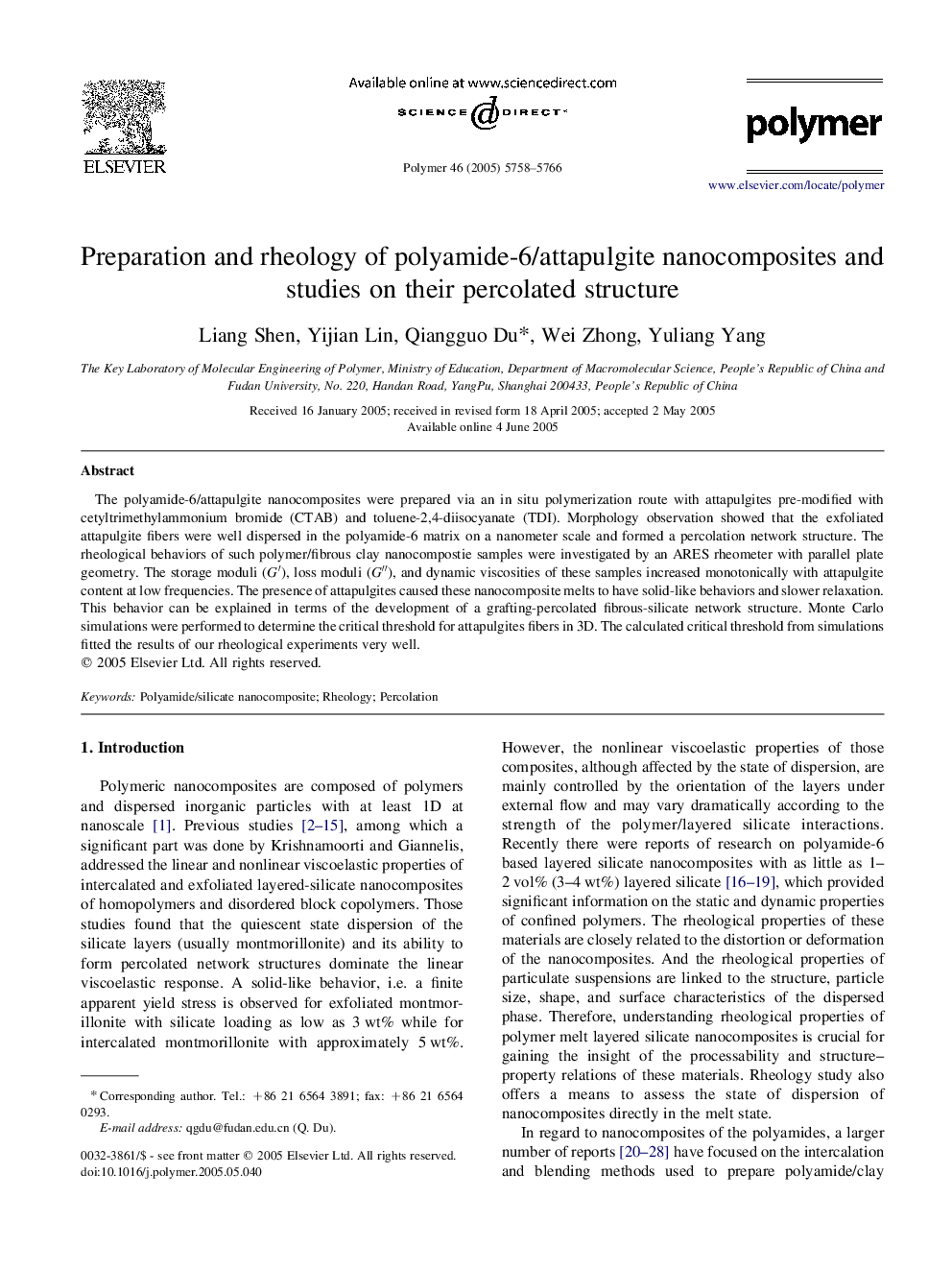| Article ID | Journal | Published Year | Pages | File Type |
|---|---|---|---|---|
| 5190919 | Polymer | 2005 | 9 Pages |
Abstract
The polyamide-6/attapulgite nanocomposites were prepared via an in situ polymerization route with attapulgites pre-modified with cetyltrimethylammonium bromide (CTAB) and toluene-2,4-diisocyanate (TDI). Morphology observation showed that the exfoliated attapulgite fibers were well dispersed in the polyamide-6 matrix on a nanometer scale and formed a percolation network structure. The rheological behaviors of such polymer/fibrous clay nanocompostie samples were investigated by an ARES rheometer with parallel plate geometry. The storage moduli (Gâ²), loss moduli (Gâ³), and dynamic viscosities of these samples increased monotonically with attapulgite content at low frequencies. The presence of attapulgites caused these nanocomposite melts to have solid-like behaviors and slower relaxation. This behavior can be explained in terms of the development of a grafting-percolated fibrous-silicate network structure. Monte Carlo simulations were performed to determine the critical threshold for attapulgites fibers in 3D. The calculated critical threshold from simulations fitted the results of our rheological experiments very well.
Keywords
Related Topics
Physical Sciences and Engineering
Chemistry
Organic Chemistry
Authors
Liang Shen, Yijian Lin, Qiangguo Du, Wei Zhong, Yuliang Yang,
